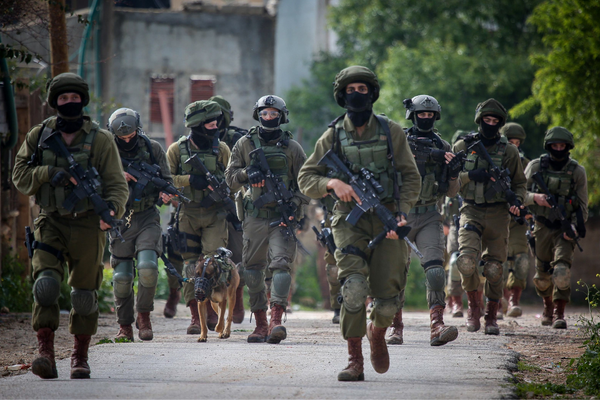Israel initially drafted 300,000 reservists — some 10 percent to 15 percent of its workforce.
Israel is withdrawing some forces from Gaza to shift to more targeted operations against Hamas, and is partially returning reservists to civilian life to help the economy as the war looks set to last well into the new year, an Israeli official said.
The official said toppling the Islamist terror group remained an objective of the offensive in the Palestinian enclave, and that some of the five brigades withdrawn will prepare for a possible flare-up of a second front against Hezbollah, the Iran-backed terror group based in Lebanon.
Since responding to the cross-border Hamas rampage of Oct. 7, Israeli officials have said they would wage their military campaign in three main stages. The first was intense shelling to clear access routes for ground forces and encourage civilians to evacuate. The second was the ground offensive that began on Oct. 27.
With tanks and troops having now overrun much of the Gaza Strip, largely asserting control despite Palestinian gunmen continuing their ambushes from hidden tunnels and bunkers, the military is moving to the third stage, said the official, who could not be named in print given the sensitivity of the issue.
“This will take six months at least, and involve intense mopping-up missions against the terrorists. No one is talking about doves of peace being flown from Shajaia,” the official told Reuters, referring to a Gaza district ravaged by fighting.
In addition to the 1,200 people killed on Oct. 7, Hamas took some 240 hostage. Israel is also determined to recover the 129 still held in Gaza. Qatari- and Egyptian-mediated truce efforts have raised the prospect of some of them being freed.
The shift appeared to correspond to pressure from Israel‘s top ally, the United States, to review tactics and do more to protect non-combatants.
Bolstering Economy
Israel initially drafted 300,000 reservists — some 10 percent to 15 percent of its workforce — for what looks set to be its longest-ever war. Government sources have said between 200,000 and 250,000 reservists were still mobilized and absent from jobs or studies.
The official said two of the brigades being withdrawn were made up of reservists, and described the move as designed to “re-energize the Israeli economy.” Local media have reported that several military divisions were deployed throughout Gaza.
The official added that some of the troops pulled out of Gaza in the south would be prepared for rotation to the northern border with Lebanon, where Hezbollah has been exchanging fire with Israel in solidarity with the Palestinians.
Israel has warned that, if Hezbollah does not back down, a full-on Lebanon war looms. Both Hamas and Hezbollah are backed by Iran, whose militant allies in Syria, Iraq, and Yemen have also been carrying out longer-range attacks against Israel.
“The situation on the Lebanese front will not be allowed to continue. This coming six-month period is a critical moment,” the official said, adding that Israel would convey a similar message to a US envoy conducting shuttle missions to Beirut.
In Gaza, Israel says it has killed more than 8,000 Palestinian terrorists — suggesting that, by its own accounting, Hamas retains core personnel. Pre-war Israeli assessment were that the group had around 30,000 fighters.
The Israeli military announced on Saturday it was sending some reservists home as part of what top commander Lieutenant-General Herzi Halevi has deemed a “reconfiguration” of forces.
“From the first moments of this war, we said it would take long,” Halevi told troops on Tuesday. “Will we ultimately be able to say there are no more foes around the State of Israel? I think that is overly ambitious. But we will deliver a different security situation — safe and, as much as possible, stable too.”
Israel has listed 174 soldiers — many of them reservists — as killed in Gaza fighting and nine on the Lebanese border.
